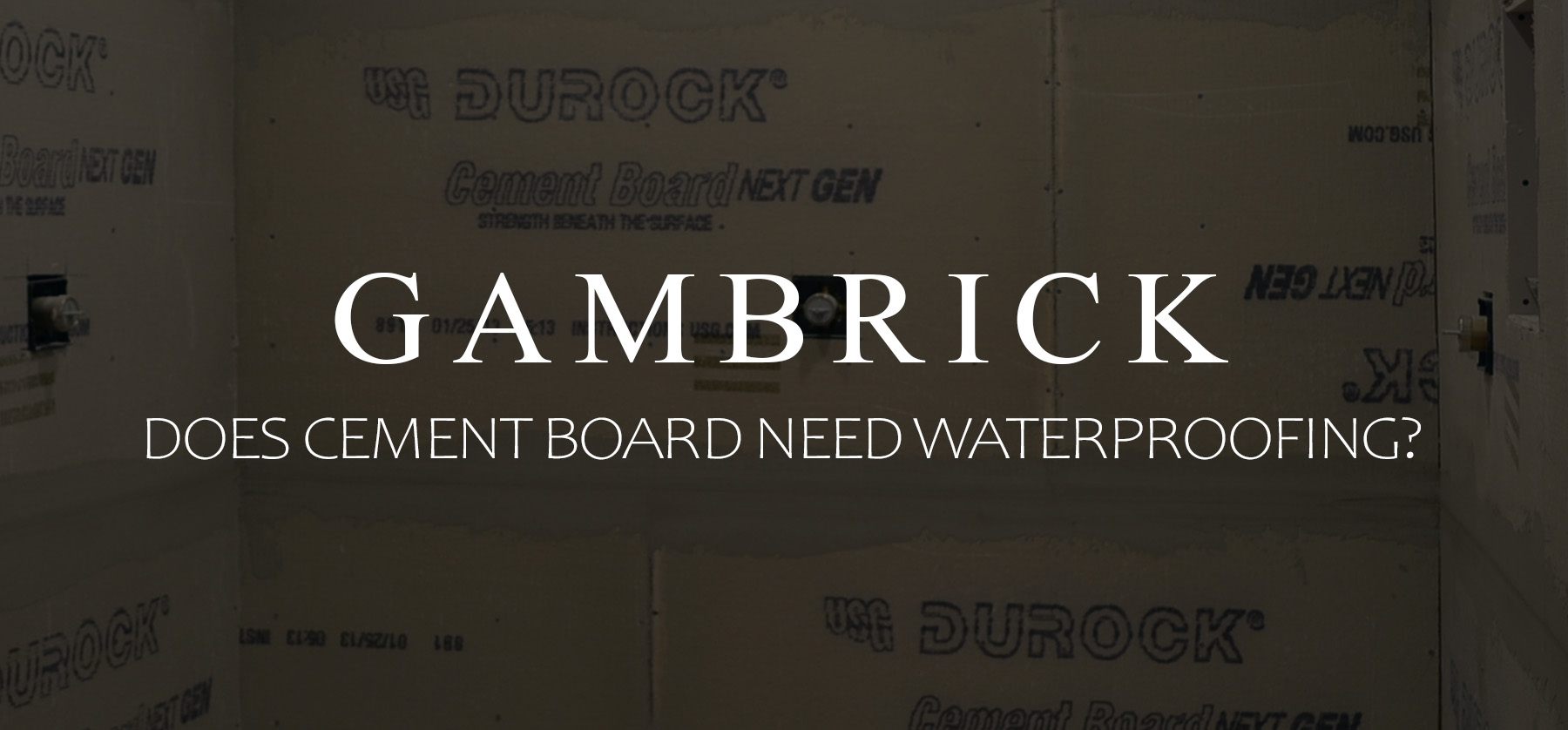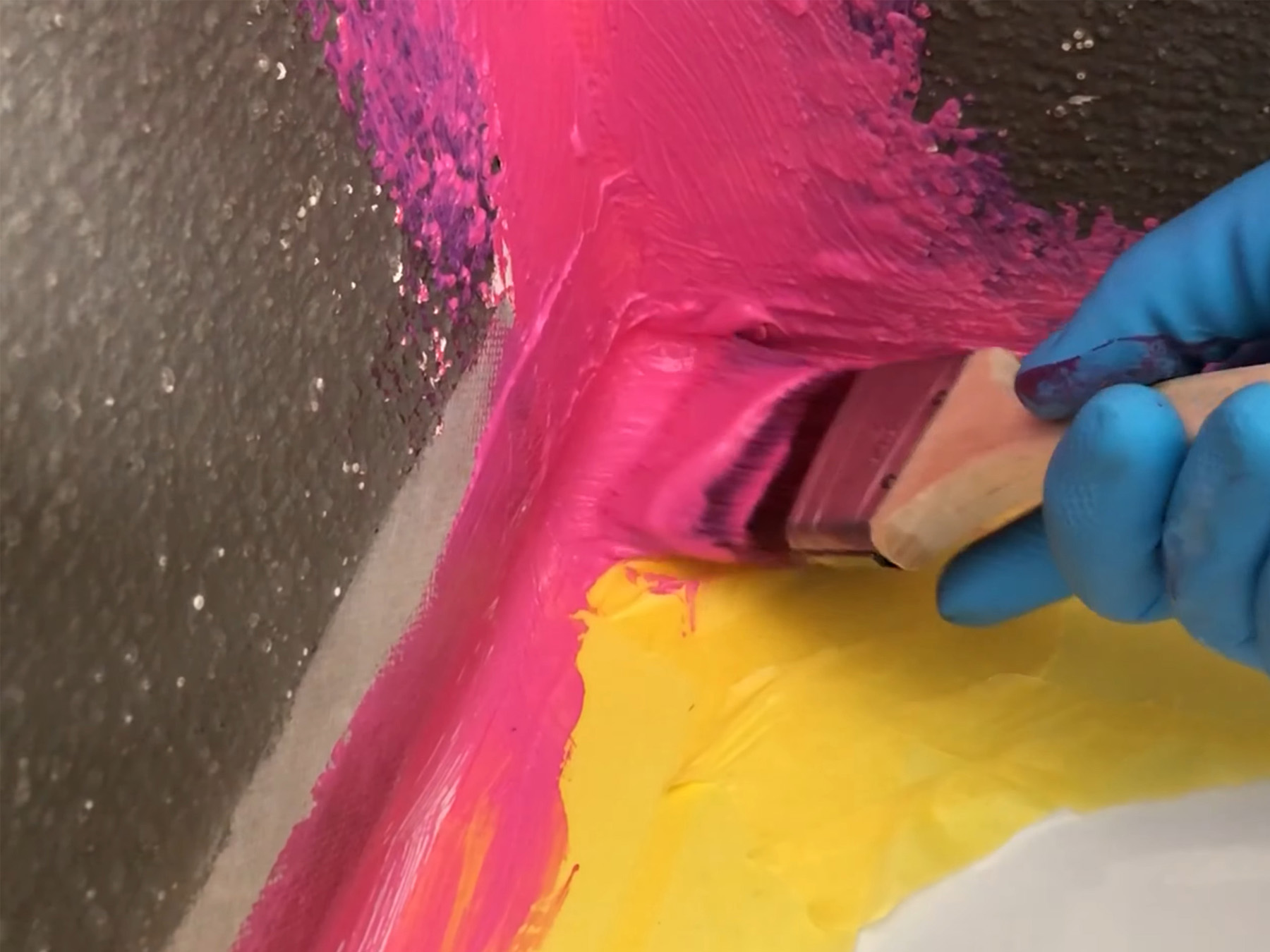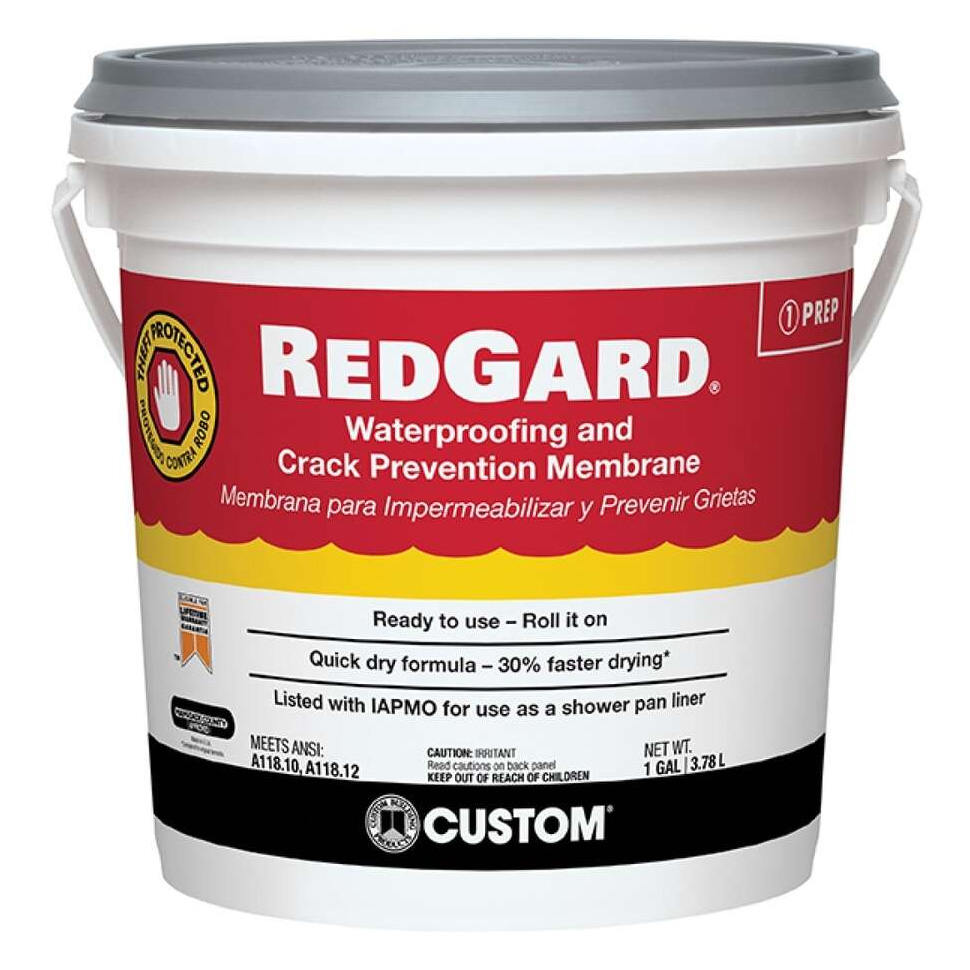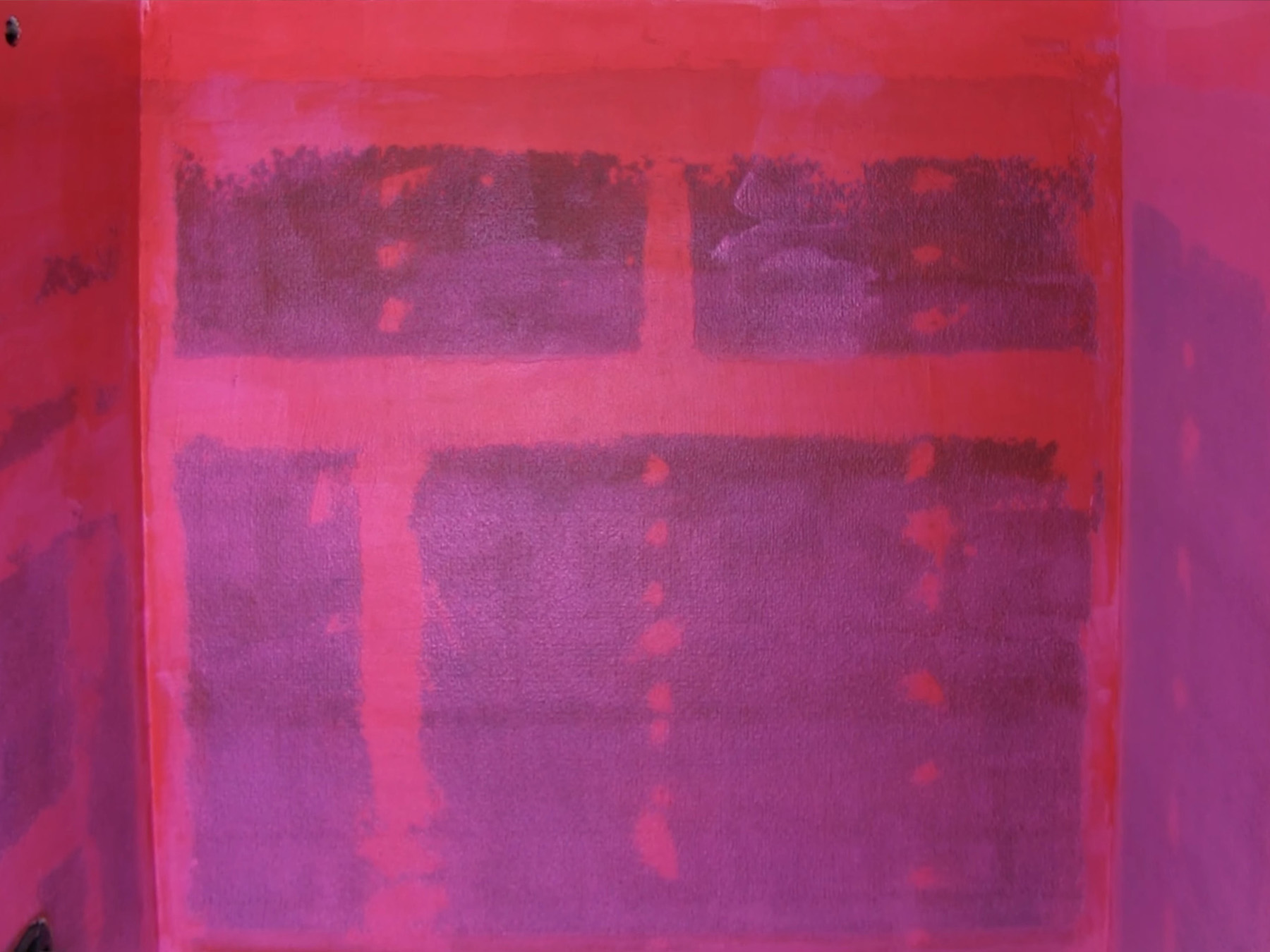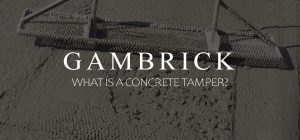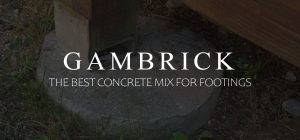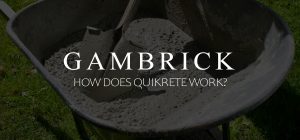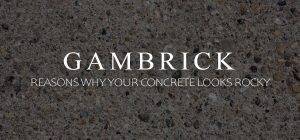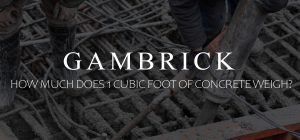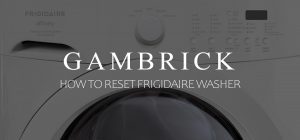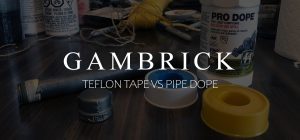Does Cement Board Need Waterproofing?
Cement board, a.k.a. concrete board or wonder-board is a cement based product designed as a sheathing material for walls and floors. It’s used as a sub-material behind tile in a shower, bathroom or kitchen. Cement board comes in sheets, usually 3’x5′, and is secured to stubs with special screws. There’s a common misconception that cement board is totally waterproof because it’s designed for wet areas, but it isn’t. When installed, cement board is water-resistant, not water-proof. This means cement board needs waterproofing. Before you install any tiles, all the seams, cracks, screws and corners need to be properly sealed and waterproofed. Some builders even recommend sealing all the large flat areas as well. This ensure no water can penetrate through the cement board and onto the framing which can eventually cause rot, mold, mildew and deterioration.
Most types of concrete backer-board are made of a fibrous cement composition that’s molded into sheets. It’s very hard and water-resistant. Meaning it will not deteriorate when exposed to water. This is ideal for areas like bathrooms and kitchens that have high amounts of moisture and water. However it’s not a waterproof material. Water can penetrate through the seams and into the cement board itself.
Concrete backer-board itself is waterproof in that it will not disintegrate when exposed to moisture. In fact, cement-board can be fully submersed under water without damage. However, it does not make a shower, bathroom or kitchen area waterproof simply by installing it. There will be seams between boards and in the corners which need to be sealed. For this reason, cement-board is considered water resistant and not water-proof without a membrane or waterproof coating.
Cement Board Needs Waterproofing
Cement board is a fantastic material for wet areas because it’s extremely water-resistant. It helps prevent mold and wont deteriorate when wet like drywall will. However it still has some flaws. Concrete-board comes in sheets that are screwed to the wall or floor. This means there are seams between boards and in the corners as well as having lots of screw penetrations.
Concrete-board makes a great backing material for tile because it’s water-resistant and very stiff. And it doesn’t flex much which makes cracked tiles less likely. However, all those seams, corners and screw holes need to be sealed. Once the cement board is installed, it needs waterproofing.
The difference between concrete backer-board and water-resistant drywall is it’s strength and water resistance. Cement-board is much stronger and harder which makes it a better sub material. And it’s also much more water-resistant. Cement-board can be submerged in water without damage, green drywall can’t.
The coating on green drywall is just on the surface, if water penetrates into the drywall it’s ruined.
When you use concrete backer-board in a bathroom or kitchen, there are some very important steps to follow.
- First, consider using a waterproof/resistant membrane against the wood studs before installing the concrete backer-board to protect the studs from moisture absorbed through the backer-board.
- Fasten the cement-board with approved screws that are waterproof and won’t rust.
- Once installed, use a liquid waterproofing sealant like Redgard on all cracks, seams and screw holes. I recommend waterproofing all the large flat areas so the shower is completely red. If you apply waterproofing correctly, you won’t need the additional membrane under the cement-board.
- Apply at least two coats of waterproofing.
It’s especially important to waterproof concrete-board in extremely wet areas like showers. I always apply at least two layer.
Seal The Seams & Corners
Once all your concrete-board is hung, it’s very important to seal all the seams and corners. These are the most likely areas that will get water penetration.
I use a liquid waterproofing sealant like Redgard. It’s applied directly to the concrete-board with a roller, trowel or sprayer and a brush. Buy it Here on Amazon.
Apply the waterproofing sealant to all the corners and seams first. Use the trowel and/or roller to apply product first and then the brush to work it into all the corners, seams and cracks. The brush is great for getting waterproofing into small areas you can’t reach with other tools.
Apply waterproofing about 6 inches on each side of a corner. Make sure you have a good amount of product in the corner seam. Work the waterproofing into the cracks with your brush and smooth the surface.
I use the flat side of the trowel or brush to smooth the waterproofing. This make installing tiles later a little easier.
Fiberglass mesh can also be installed in the corners and seams. Cut the mesh to length and push it right into the wet waterproofing layer. It’s done just like applying drywall tape to wet spackle. Once the fiberglass is in place, cover it with another layer of waterproofing.
Waterproofing sealants like Redgard take about 60-90 minutes to dry. You’ll know it’s dry because the color turns from pink to red.
Once all the corners, seams and screw holes are sealed, go ahead and waterproof all the remaining flat areas. For large areas you can use a sprayer, roller or trowel.
Once you’re all done, the shower should be completely red.
Make sure you also waterproof any shelves, seats, curbs and/or other decorative areas you may have built into the shower.
How To Waterproof Cement Board
The best way to waterproof cement board is with a liquid waterproofing material like Redgard.
Redgard is a liquid you apply to the cement board using a brush, roller, trowel or sprayer.
You can use fiberglass mesh along with the waterproofing layer for even more protection.
Once the cement board is installed, tape off areas you don’t want waterproofing. The most common area is a tub or shower pan. I recommend a painters tape called Frog tape. It has a special design that cuts down on bleeding.
Next, use some silicone based caulk to seal the areas where cement board meets any other surface that doesn’t get waterproofed. This is again usually a tub or shower pan. Allow the caulk to dry before you start waterproofing.
Apply waterproofing to the corners, seams and screw holes first. Apply the waterproofing generously. Push it into the cracks, seams and corners with the brush.
After the first coat of waterproofing, when its still wet, apply the fiberglass mesh. Push it into the waterproofing layer just like tape in spackle. Smooth it out and then apply another coating of waterproofing on top.
Once all the seams, screw holes and corners are waterproofed, allow the material to dry. This usually takes 60-90 minutes.
Once the first layer is dry, apply a second layer over everything. This means a second coat on all screw holes, corners and seams and a single coat on all flat areas.
Allow the area to completely dry before installing tile. You’ll know when Redgard is dry because it turns color from pinkish to red.
Waterproofing Cement Board With Tile
The way you eventually apply your mud, tile and grout can help waterproof the cement board too. However, it’s not a replacement for waterproofing. It’s something you do in addition.
Properly waterproofing a shower or other wet area is a combination approach. First you install cement-board. Then you waterproof it. And finally you correctly apply mortar, tile and grout. Each step adds to the water-resistance of the area.
Many builders used to apply a layer of mud to form a shower floor. This has been replaced with cement board. Instead of building an old fashioned mud floor sloped into a drain. Build the floor out of cement-board with waterproofing. It works just as well but cuts down on labor.
When it comes time to install tile, I recommend adding a little hardener to the mortar. It helps the mortar adhere to both the cement board and tile. This creates a stiff bond that’s not easy to break.
When you install floor tile, apply mortar to the floor and back of the tile. Then press the tile down into the floor. This eliminates voids where water can collect and pop a tile.
For wall tiles you don’t have to apply mortar to the back of the tile. Simply apply mortar to the wall and then press the tiles in place. Wall tiles don’t get as wet as floor tiles because water runs off them. They also aren’t exposed to as much pressure because you don’t walk on them.
Use the correct grout. For very thin grout lines use un-sanded grout. But for wider grout lines use sanded.
Press the grout hard into the grout lines so that it penetrates all the way down to the mortar. This eliminates small spaces water can collect.
Installing Cement Board
If you want your cement board shower to eventually be waterproof, you have to install it correctly.
Before you install any concrete-board, check that the sub-floor and walls are not bouncy, weak or rotted. Concrete board is strong and stiff with high compressive strength. But it has low tensile strength and needs to be installed on a solid foundation. That could be the floor, walls, shelves, a curb or seat.
If the frame you apply the concrete board onto is weak or moves, it could eventually crack the waterproofing layer and tile.
Concrete board should be applied directly to the framing with screws. Most cement-board manufacturers also sell screws approved for their boards. However, any waterproof screw will do. But I recommend using a screw that’s designed to penetrate cement-board. They have special grooves that make screwing into and through concrete easier.
Make sure the top of the screw is flush with the top of the concrete-board. If the screw heads stick up from the board’s surface, it’ll interfere with the waterproofing layer.
Once the boards are all installed, press the walls and all surfaces covered by cement board. If the boards are installed correctly and the frame is strong, you should feel no movement. If your boards flex or bounce, remove the cement boards and fix the issue before applying waterproofing.
Make accurate cuts. Each board seam and corner should touch the next board without large gaps.
Sealing Cement Board With Caulk
There are some places a waterproofing layer can’t be used, like where cement board touches a tub flange. In this case, you need to use a flexible sealant instead. A.K.A. caulk.
- Mask off areas where you don’t want caulk with tape. I recommend Frog tape. It creates a nice edge with very little bleeding.
- Apply a silicone based caulk to areas where cement board comes in contact with the tub flange or any other material where you can’t use waterproofing.
- Apply the caulk and push it into the cracks with your finger. Smooth the surface as well as possible. Really push the caulk into the cracks with a decent amount of pressure. The further down the crack you can get caulk the better the waterproofing will be.
- Caulk should be applied before the waterproofing layer.
- The waterproofing layer is applied on top of the caulk.
- Use a silicone based caulk.
Apply your waterproof layer right over the caulk. Make sure not to get any on the tub. This is where tape and masking comes in handy.
FAQ
Here is a list of questions we’re commonly asked about waterproofing cement-board.
Do I Need To Waterproof Cement Board In A Shower?
Yes, when cement boards like HardieBacker are used in a shower they should always be waterproofed before you install tile. Tile, mortar and grout are water resistant but not waterproof. Grout and mortar are both masonry products which can absorb water. Usually the water doesn’t penetrate very far and dries out. However, over time moisture can work it’s way below the tiles and onto the cement-board. It can then penetrate through the seams, cracks and screw holes onto the wood frame. This can eventually cause rot, mold and deterioration of the wood.
Once water hits the cement-board it needs to be stopped by a waterproofing layer.
Do You Need Waterproofing Over Cement Board?
You need to apply waterproofing over cement board in wet areas such as a shower. However, in areas that don’t get wet you don’t need it.
Mortar, tile and grout provide some protection against water as well as the cement board itself. It’s enough to resist water in areas that don’t get that wet like a tiled floor. However, showers are constantly in contact with large amounts of water and moisture. In these areas you should always install a waterproofing layer on top of the cement board before you tile.
Can You Tile Directly On Cement Board?
You can tile directly on top of cement board in areas that don’t get that wet. For example, if you’re using cement-board as a sub-floor in a bedroom that will be tiled. However, in areas that get extremely wet, like a shower, you should always apply a layer of waterproofing on top of the cement board before you tile.
Extremely wet areas like showers not only have lots of water but also humidity. This amount of moisture is too much for cement board, mortar, tile and grout to handle alone. In these areas you need a waterproofing layer in between the cement board and mortar. Any moisture that penetrate through the mortar will be stopped by the waterproofing.
Is Cement Board Good For Showers?
Cement-board is a great material to use in a shower. It’s very stiff and strong with very little flex. This makes is a great backer material for tile and stone slabs. However, you have to apply a waterproofing layer over the cement board before you install tile or stone.
Tile and stone are installed using mortar and typically have grout. Mortar and grout are both cement based products that absorb water. In highly wet areas, water will absorb through the grout and mortar down to the cement board. It can then penetrate through the seams and screw holes created when you hung the cement-board.
Once water penetrates through the cement-board it reaches the home’s wood frame where it can cause mold, rot and deterioration. A waterproofing layer is essential to stop leaks.
Summary: Does Cement Board Need Waterproofing?
Cement board, a.k.a. concrete board or wonder-board is a cement based product designed as a sheathing material for walls and floors. It’s used as a sub-material behind tile in a shower, bathroom or kitchen. Cement board comes in sheets, usually 3’x5′, and is secured to stubs with special screws. There’s a common misconception that cement board is totally waterproof because it’s designed for wet areas, but it isn’t. When installed, cement board is water-resistant, not water-proof. This means cement board needs waterproofing. Before you install any tiles, all the seams, cracks, screws and corners need to be properly sealed and waterproofed. Some builders even recommend sealing all the large flat areas as well. This ensure no water can penetrate through the cement board and onto the framing which can eventually cause rot, mold, mildew and deterioration.
Most types of concrete backer-board are made of a fibrous cement composition that’s molded into sheets. It’s very hard and water-resistant. Meaning it will not deteriorate when exposed to water. This is ideal for areas like bathrooms and kitchens that have high amounts of moisture and water. However it’s not a waterproof material. Water can penetrate through the seams and into the cement board itself.
Concrete backer-board itself is waterproof in that it will not disintegrate when exposed to moisture. In fact, cement-board can be fully submersed under water without damage. However, it does not make a shower, bathroom or kitchen area waterproof simply by installing it. There will be seams between boards and in the corners which need to be sealed. For this reason, cement-board is considered water resistant and not water-proof without a membrane or waterproof coating.
If you have any questions about waterproofing cement board, email any time.
